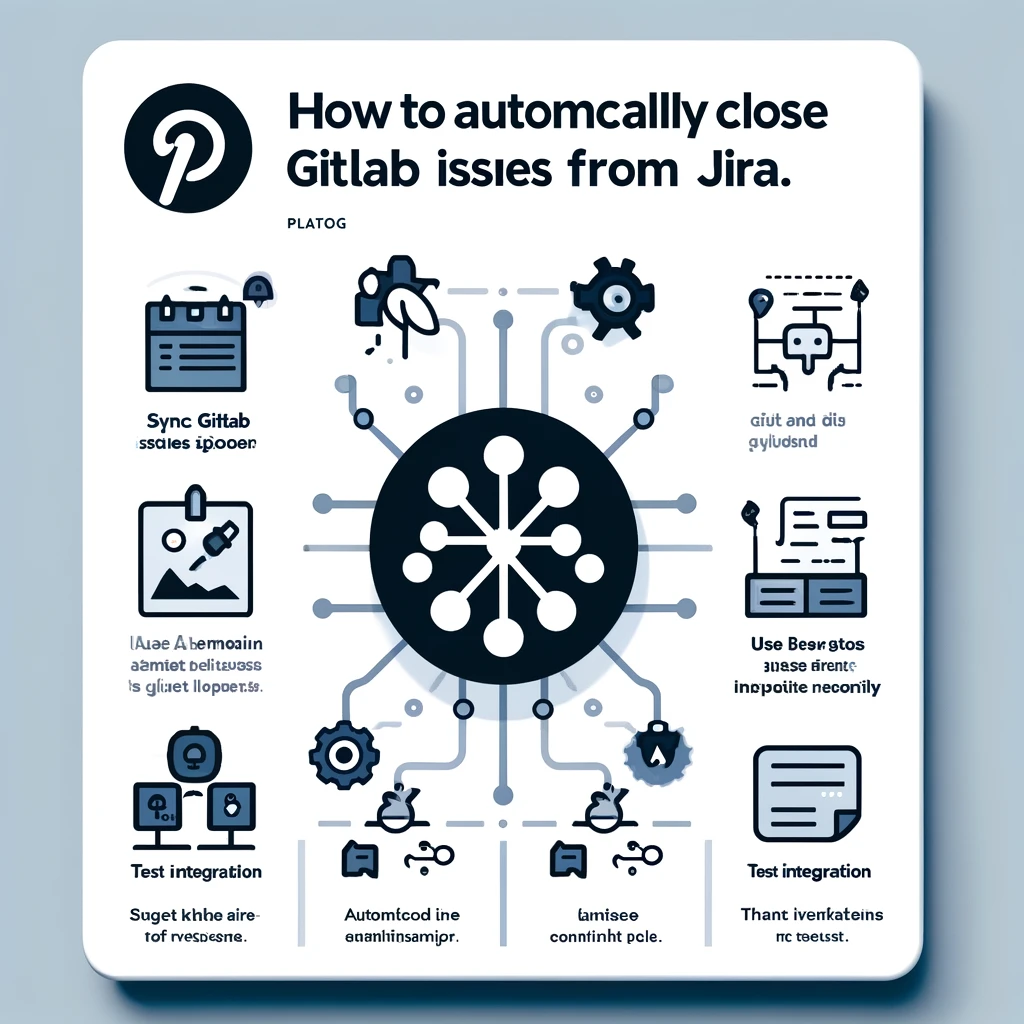Table of Contents
ToggleComprehensive Guide: How to Automatically Close GitLab Issues from Jira
Introduction
For teams using both GitLab and Jira, integrating these platforms can greatly enhance productivity by automating the closing of GitLab issues directly from Jira. Instead of manually updating both platforms, this integration ensures that any status change in Jira reflects on GitLab, saving time and reducing errors. This guide walks you through the step-by-step process of setting up this integration, optimizing it for your workflow, and making it both user and search-engine friendly.
Why Integrate GitLab with Jira?
Integrating GitLab with Jira provides multiple benefits that streamline your project management process:
1. Improved Tracking
By syncing GitLab and Jira, you maintain a single source of truth for both issue tracking and project management. Any updates made in Jira will automatically reflect in GitLab, ensuring that your development and management teams are always on the same page.
2. Automation Benefits
Automation eliminates manual tasks like updating issues in both tools. Once a Jira issue is marked complete or transitions to a specific status, the corresponding GitLab issue will automatically close, freeing your team to focus on more important tasks.
3. Centralized Management
Having a centralized system for managing both GitLab and Jira issues enhances workflow visibility. Project managers can track all tasks from Jira without switching between platforms, ensuring smoother project management and better oversight.
Step-by-Step Guide: Setting Up GitLab-Jira Integration
Step 1: Install the GitLab-Jira Integration Plugin
To start the integration, you need to install the appropriate plugin or connector. Here’s how:
- Navigate to Jira Settings > Apps > Find New Apps.
- Search for the GitLab Jira Integration plugin.
- Install the plugin, and follow the setup instructions provided by the plugin provider.
This plugin acts as the bridge between the two platforms, allowing them to communicate with each other.
Step 2: Create Jira Automation Rules
Once the plugin is installed, you can set up Jira automation to handle issue transitions:
- Go to Project Settings in Jira.
- Under Automation, click on Create Rule.
- Set a trigger for the automation. For example, you could set the rule to activate when a Jira issue transitions to “Done” or another relevant status.
- Add the action to close the corresponding GitLab issue. You may need to map the GitLab issue ID with Jira.
Step 3: Test the Integration
Before fully deploying the automation, it’s important to test the setup:
- Create a test Jira issue linked to a GitLab issue.
- Transition the Jira issue to the status that should trigger the automation (e.g., “Done”).
- Check GitLab to confirm the issue has been closed automatically.
Testing ensures that everything is configured correctly and minimizes potential disruptions to your workflow.
Advanced Tips for Optimizing the Integration
Once the integration is set up, you can further optimize it by utilizing additional features:
1. Use Jira Automation Rules for Additional Actions
You can extend Jira’s automation capabilities beyond closing issues. For example, you could trigger additional actions such as:
- Sending a notification to the team when an issue is closed.
- Automatically updating related issues or tickets.
- Reopening GitLab issues if the Jira issue is moved back into progress.
These additional rules can make your workflow even more streamlined and efficient.
2. Set Up Notifications for Closed Issues
To keep your team informed, set up Jira or GitLab notifications to alert team members when an issue has been automatically closed. This ensures that everyone stays in the loop and can act on completed tasks as needed.
Linux vs CentOS: Which is the Best OS for Servers and Enterprise UseAsahi Linux vs macOS: Which OS is Best for Your Apple Silicon DeviceAsahi Linux vs Ubuntu: Which Linux Distribution is Best for Apple Silicon and General UseLinux vs CentOS: Which is the Best OS for Servers and Enterprise UseBitwarden vs Microsoft Authenticator: Which One is Right for You1Password vs Bitwarden: Which Password Manager is Best for You in 2024
Best Practices for Integrating GitLab and Jira
To ensure smooth operations, consider these best practices:
1. Keep Your Workflow Simple
While it’s tempting to set up complex automation rules, simplicity often leads to fewer errors and easier maintenance. Start with basic automation (e.g., closing GitLab issues when Jira issues are marked as done) and build on it as necessary.
2. Regularly Review and Optimize Your Automation Rules
As your project evolves, so should your automation rules. Periodically review your Jira automation rules to ensure they still align with your team’s workflow. Make adjustments as necessary to improve efficiency.
3. Use Clear Naming Conventions
When linking Jira issues to GitLab, use clear naming conventions or labels to ensure easy tracking across both platforms. This will make it simpler to manage issues and avoid confusion.
Conclusion
Automating the closure of GitLab issues from Jira is a powerful way to boost team productivity, streamline workflows, and minimize manual errors. By following this guide, you can set up the integration, automate your issue management process, and free your team to focus on development and other core tasks. Regularly review your automation rules to keep your workflow efficient and optimized.
By implementing this solution, your team can enjoy a more seamless, automated project management experience across both platforms.
Key Takeaways:
- Sync GitLab and Jira to maintain consistency across platforms.
- Automate issue closures to reduce manual work and increase efficiency.
- Test the integration to ensure proper functionality.
- Use Jira Automation Rules for advanced workflows and notifications.
- Keep workflows simple and regularly review your automation setup for optimal results.






